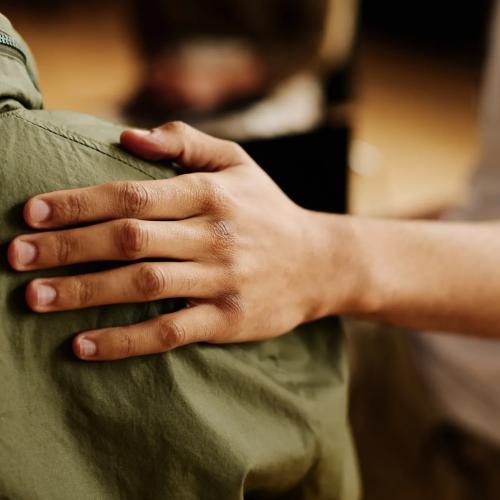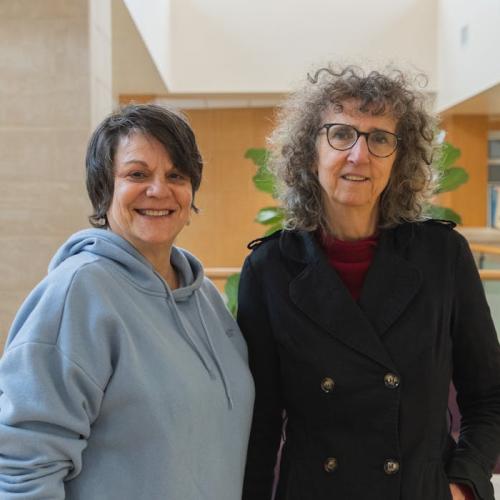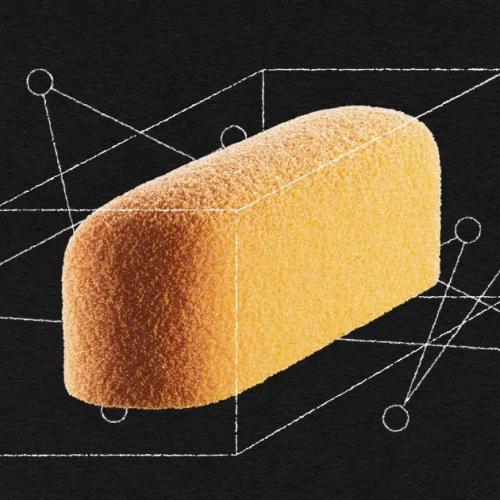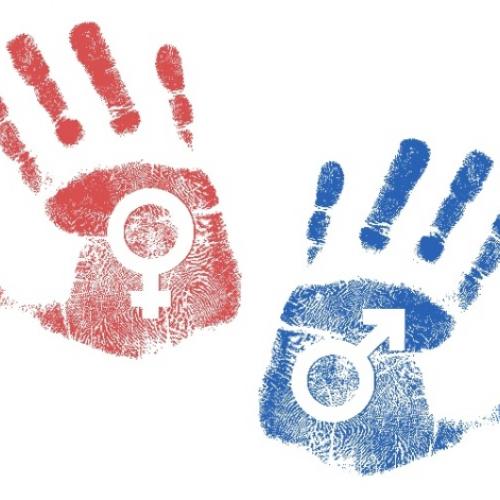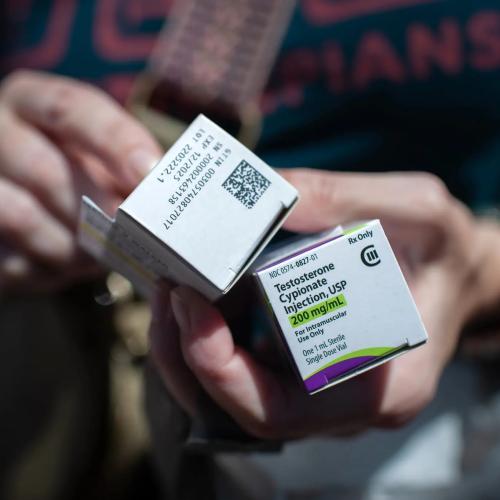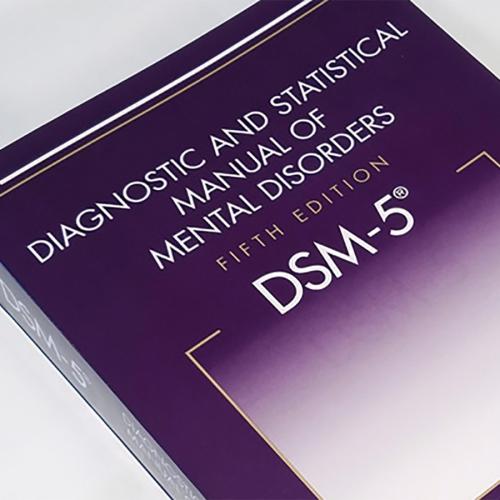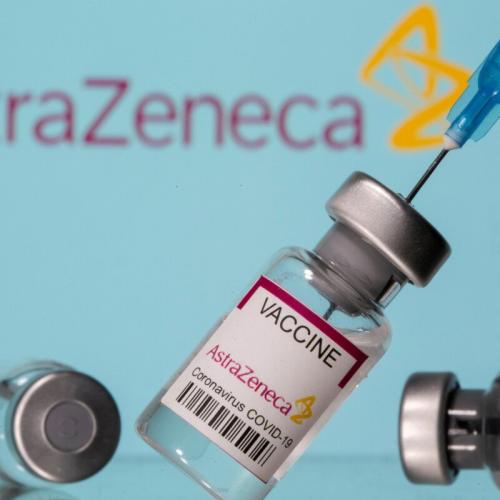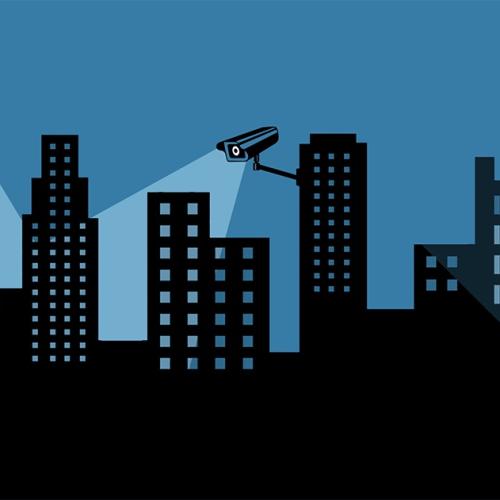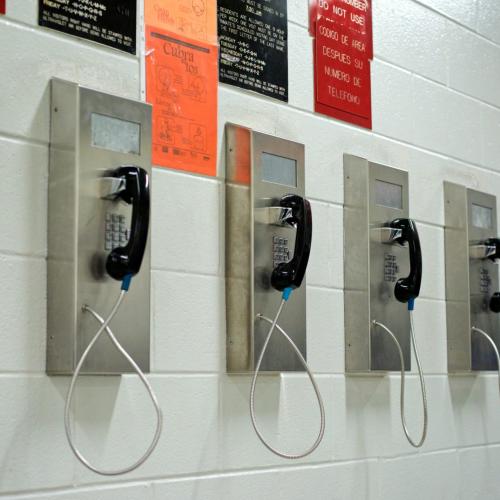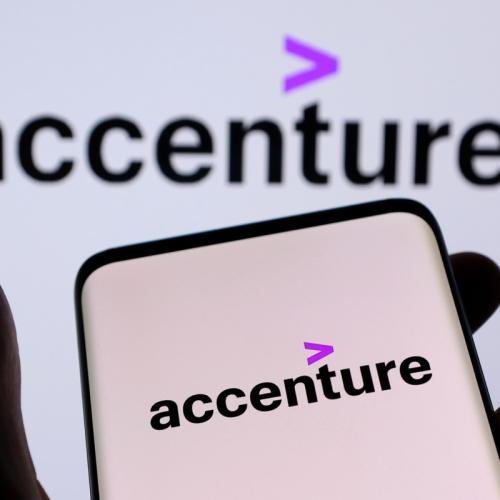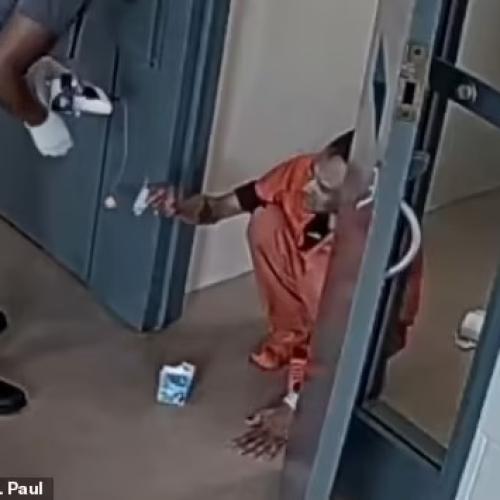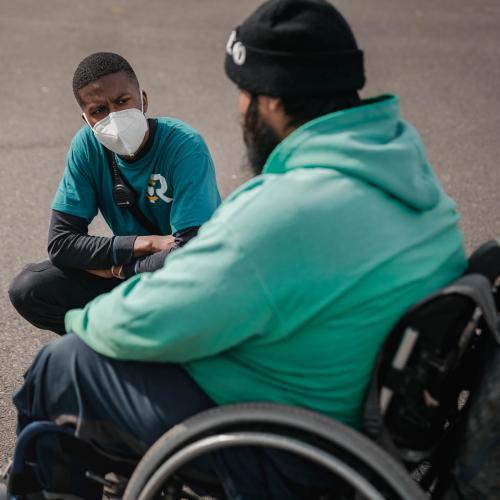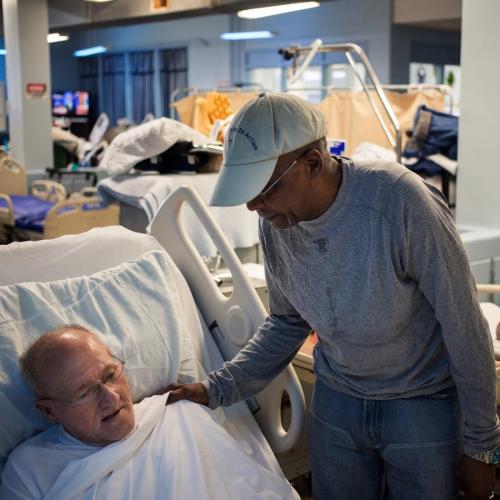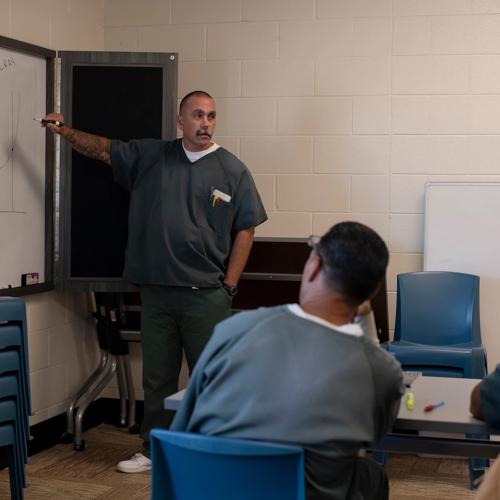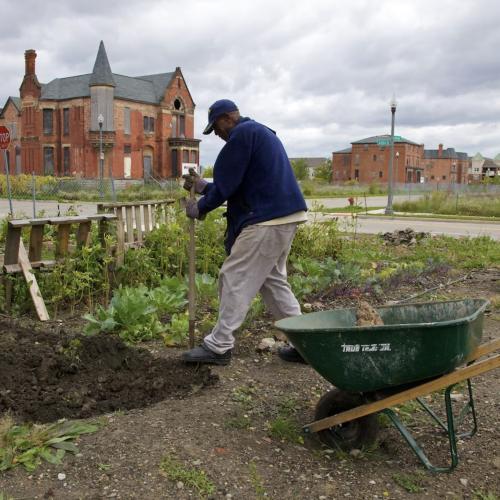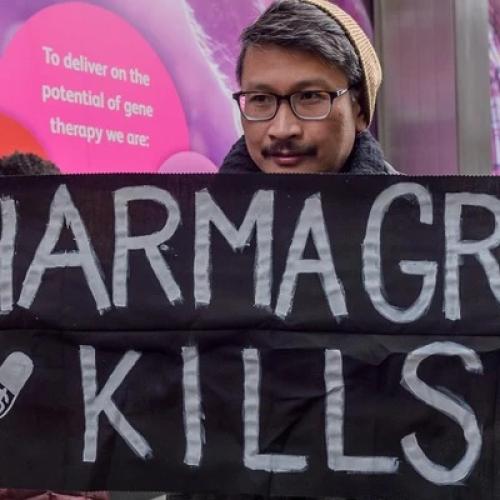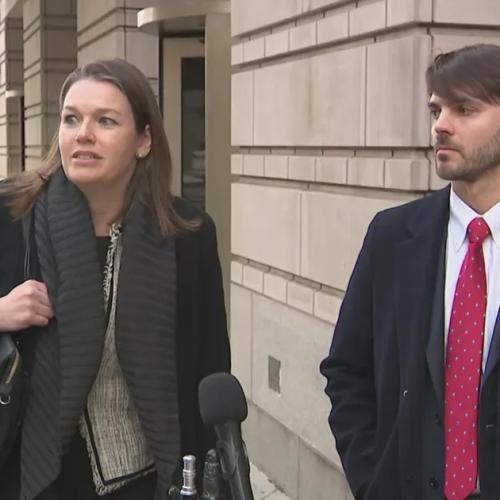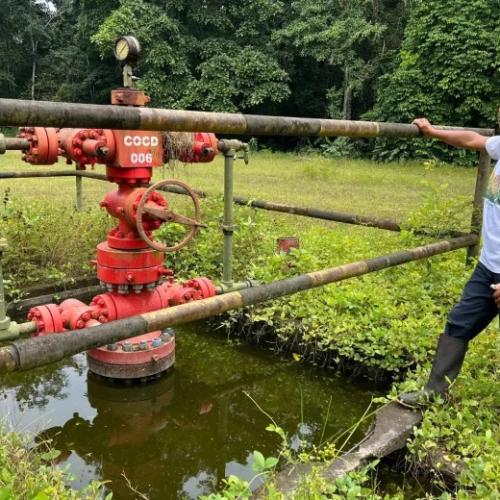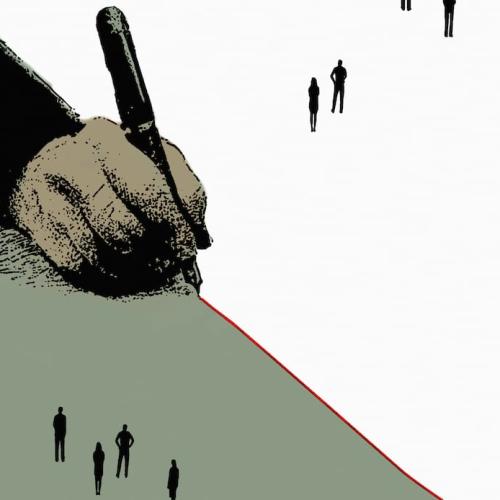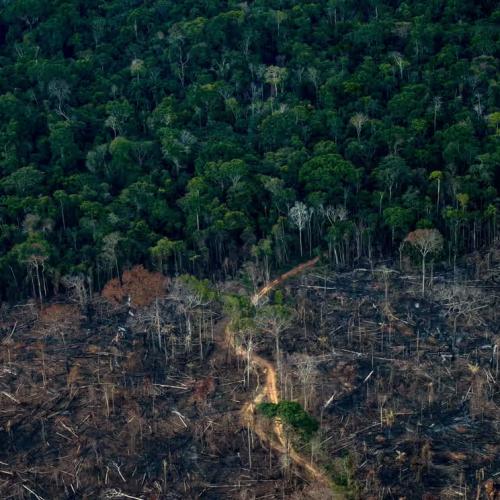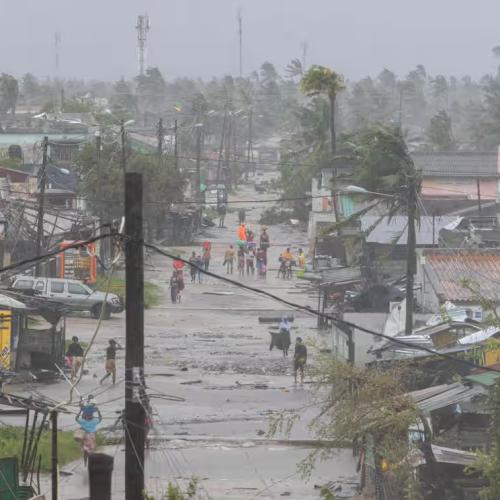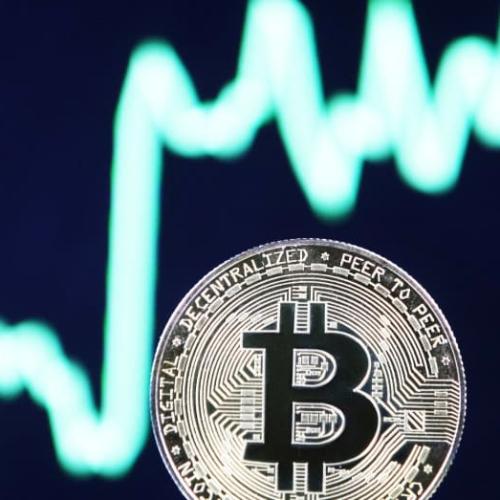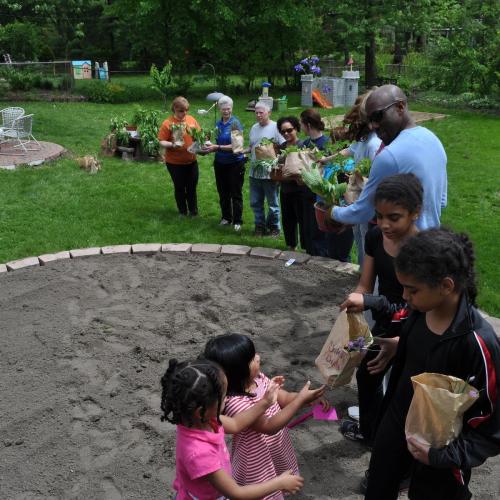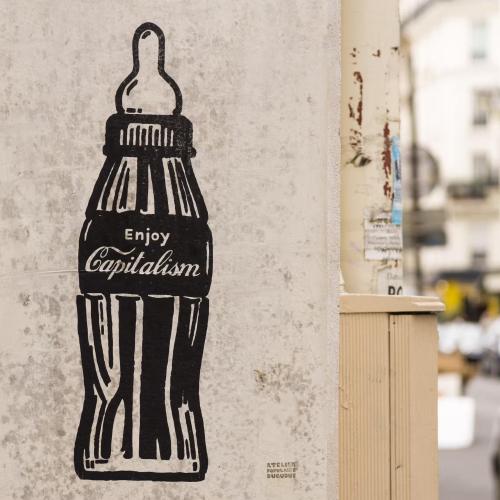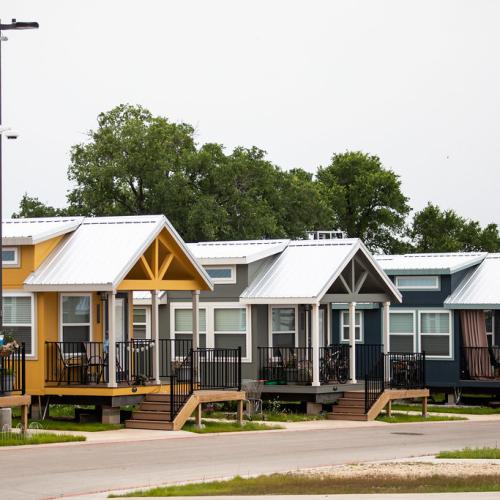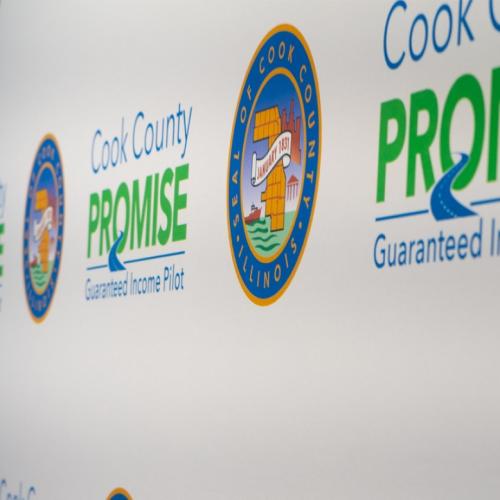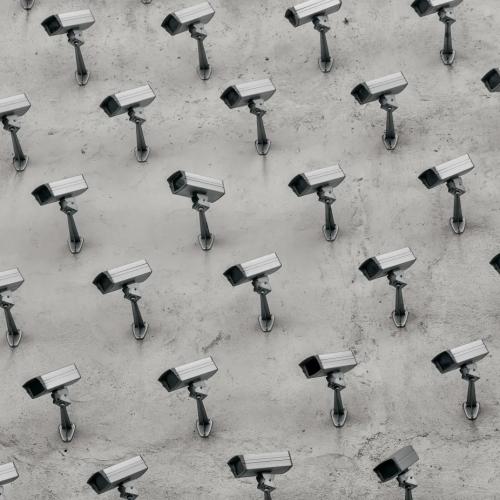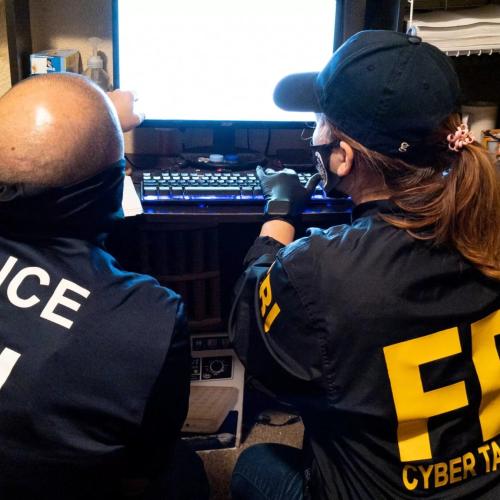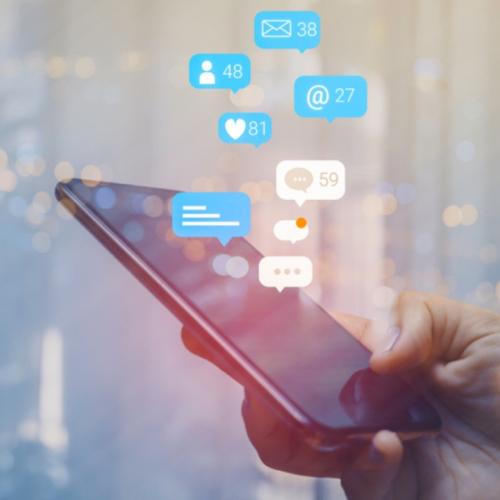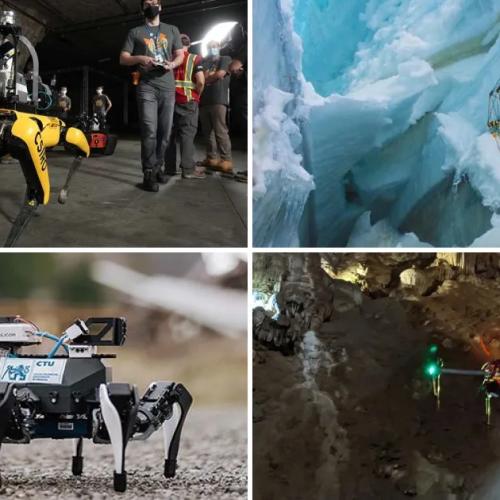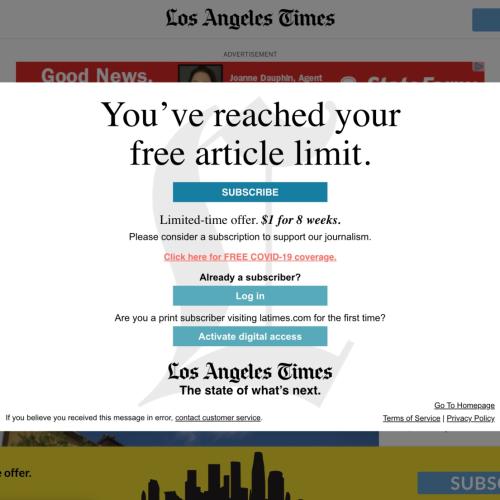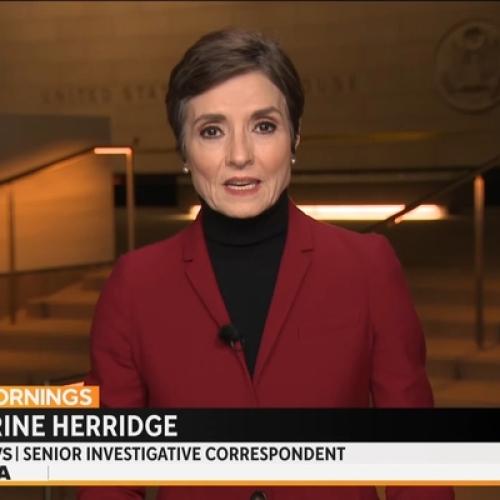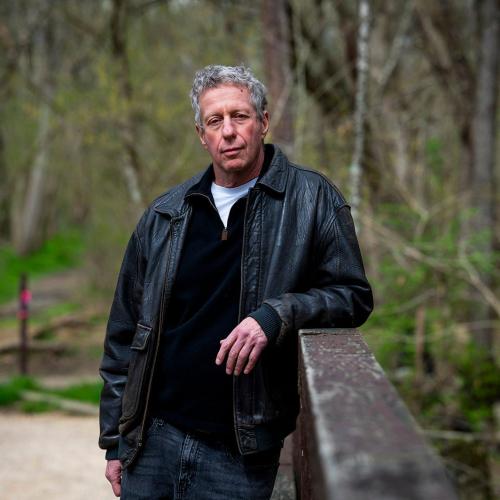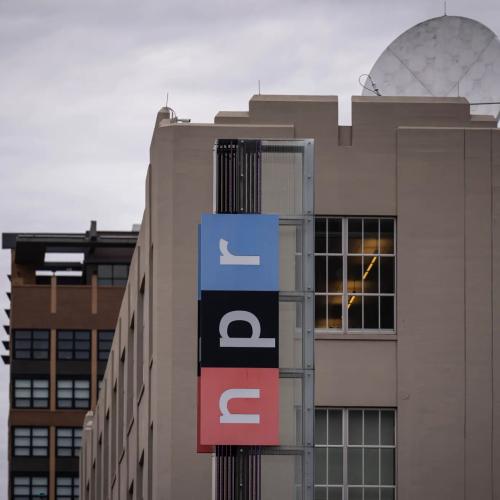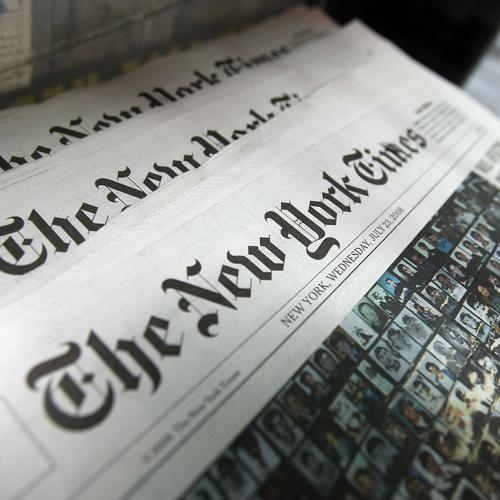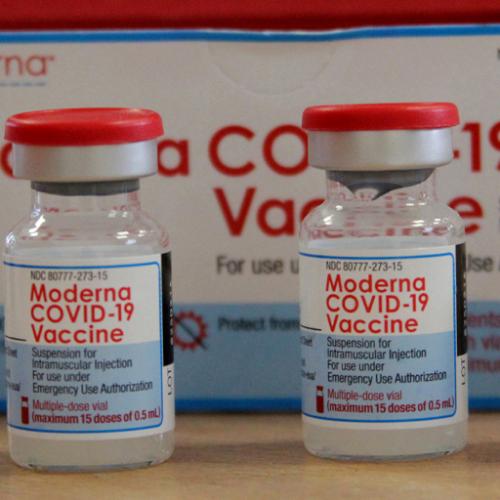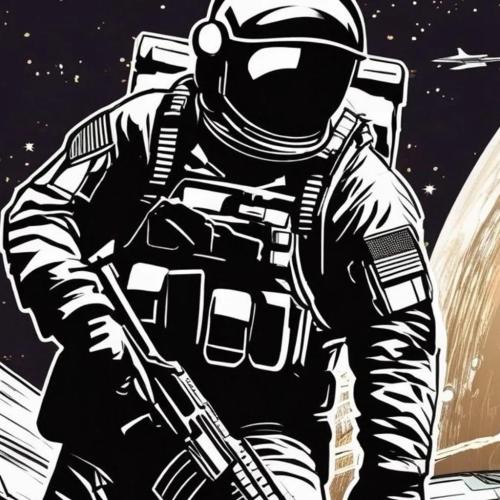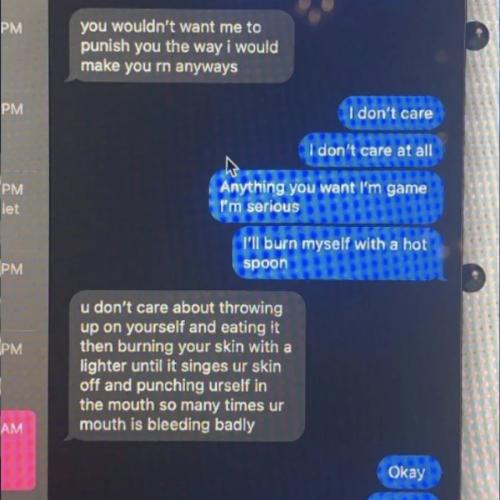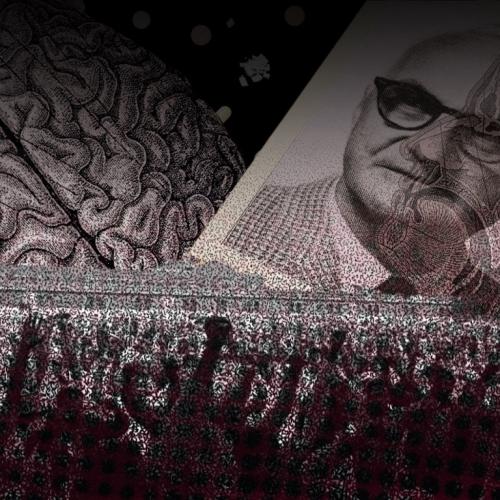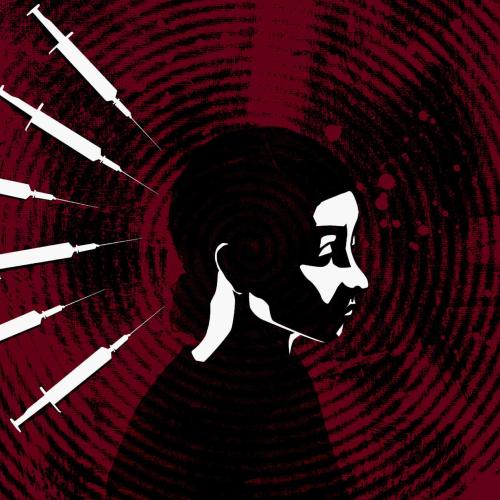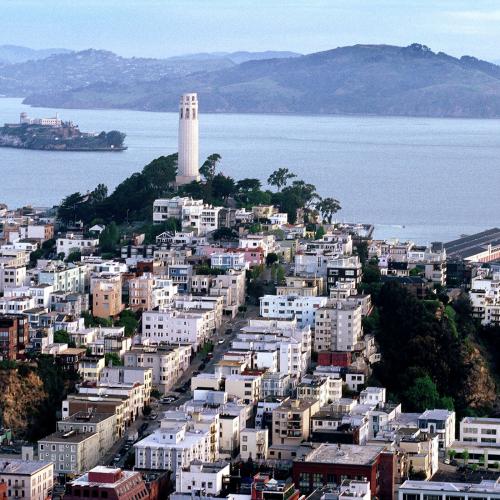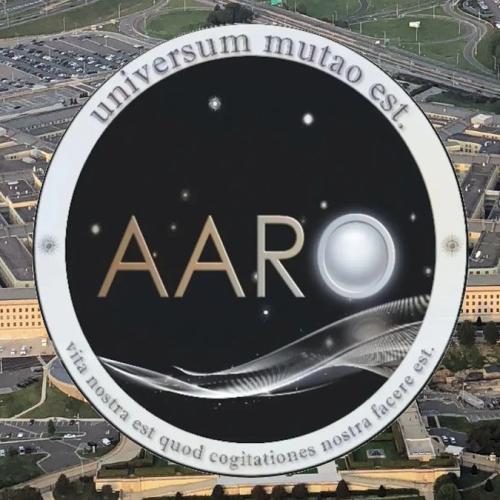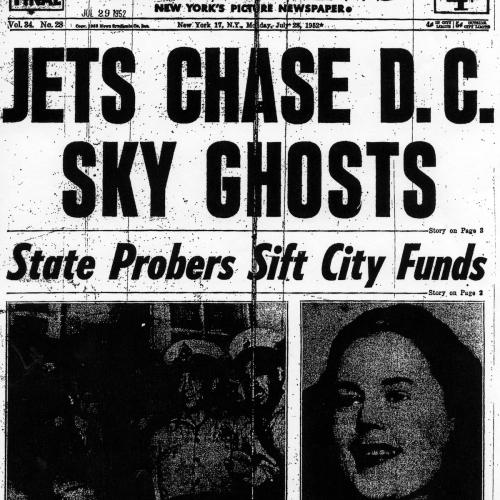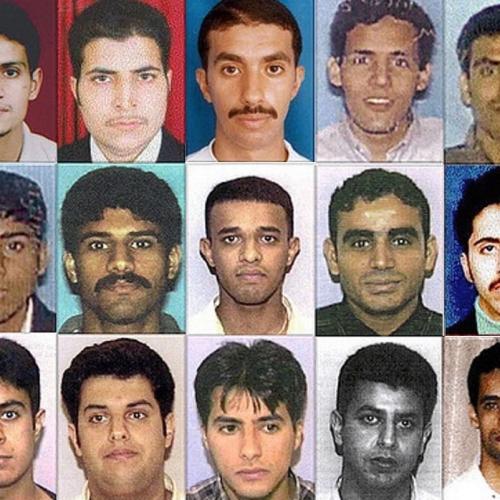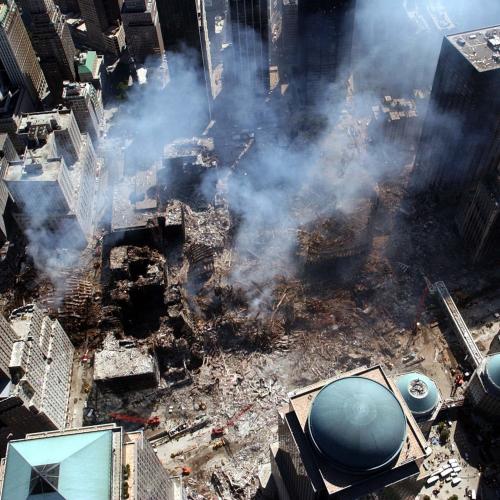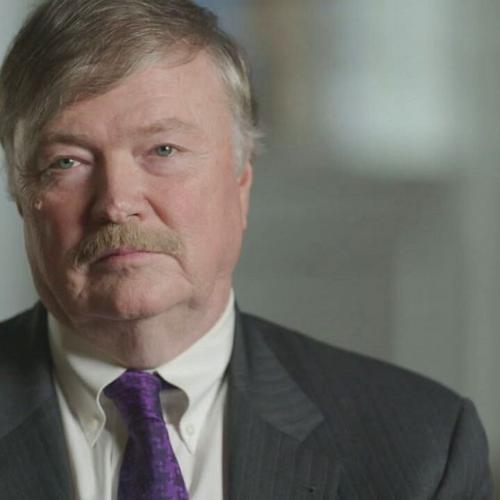Inspiring: Healing Our Relationships News Articles
We believe in the creative, redemptive, and collaborative potential of humanity. Below are key excerpts of inspiring news articles on healing social division and polarization. If any link fails to function, a paywall blocks full access, or the article is no longer available, try these digital tools.
For further exploration, delve into our Inspiration Center.
Edgard Gouveia Jr., 58, says the key to solving the world's problems is games. "I use games and narrative to mobilize crowds," says the Brazilian game inventor and co-founder of Livelab. He's worked with schools, companies, government offices and slums. "Games that can make a whole town, a whole city or even a whole country play together." And now he's developing a global game called "Jornada X" whose goal is to get kids and teenagers to save nothing less than all life on the planet. Through games and playful activities, we create a field of trust. When you create abundance of connection, abundance of possibility, people sense it right away. It doesn't matter if for 30 or 40 years they were living in scarcity. By belonging to a group that we love and that's doing good in the world – these are ways of energizing our collective power, our collective meaning. When you do some good, you feel like you have an identity. [Jornada X] starts with young people. They receive a call that's like a Matrix video that says, "Humanity isn't doing well. Society is violent and nature is dying. But you are one of a group of special kids with superpowers – things like love, helping others, strength, and friendship. As soon as they sign up, the team starts to receive missions. We might say, "Look at your neighborhood. What's wrong?" By the end of seven weeks, they have to find a solution ... Kids play war games all the time. They collaborate to kill people. It's not that they like death, but they want to have this kind of adrenaline. What could be more exciting? My answer is saving the planet in a way that adults haven't been able to."
Note: The latest US Air Force recruitment tool is a video game that allows players to receive in-game medals and achievements for drone bombing Iraqis and Afghans. What world do we want our youth to live in? Explore more positive stories like this in our inspiring news articles archive, which aims to inspire each of us to make a difference.
It happened 25 years ago - up to 800,000 people in Rwanda killed - mostly from the minority Tutsi community, all of that over the course of just a hundred days. Today the hundreds of thousands of people who carried out those killings live among their victims. Journalist and author Philip Gourevitch has witnessed the unique way Rwandans have defined and navigated forgiveness after the massacre. There was a lot of agency in the local level. And the experience of the genocide was extremely localized. People were killed by neighbors. It was intimate. They knew each other. And to simply ignore that wouldn't work. In order to navigate the aftermath of the genocide, the Rwandan government set up this nationwide reconciliation process. So they set up a system of community courts - without lawyers - to sort of repurpose a system that really had only been used for small claims mitigation in traditional Rwanda, called gacaca, and have open, communal - what we might call a town hall - format for trials. And then the idea was to hold people accountable and have a system of punishment. And this system banked very heavily on encouraging confession and rewarding it. But the confessions were supposed to be also verified by the community. The motto of the gacaca courts was, truth heals. Forgiveness doesn't require trust. Forgiveness simply means letting go of the idea of getting even, forgoing the idea of revenge. Right? Now, even that's a big ask. But it means accepting coexistence. There's never been as comprehensive a reckoning with such communal violence or mass atrocity. It was an ongoing, multi-year confrontation with the past in the communities.
Note: Explore a treasure trove of concise summaries of incredibly inspiring news articles which will inspire you to make a difference.
The story of two enemies cuts through the darkness. It begins on a battlefield in the Iran-Iraq war, and ends 20 years later in a waiting room in Vancouver. The Iran-Iraq war began in 1980, and ended eight years later. It was the longest conventional war of the 20th century, claiming at least a million casualties. Najah Aboud was nearly one of them. Najah was severely wounded. He crawled off to a bunker, where he saw corpses from both sides and prepared himself to die. Zahed Haftlang ... was assigned as a medic. After the Iranians recaptured Khorramshahr in May 1982, Zahed was ordered to go into the bunkers and treat wounded countrymen. It was then that he ... spotted Najah near the back. Both men were suspicious of each other. Zahed thought Najah's body might be booby-trapped. Najah thought Zahed might kill him. Then Zahed reached into Najah's breast pocket and pulled out a photograph. It showed Najah, with a beautiful woman, and infant son. It was at that very moment that Zahed decided to save Najah's life, even though it meant risking his own. Najah was taken to a prisoner of war camp, where he'd remain in unspeakable conditions for the next 17 years. While reading magazines in [a Vancouver] waiting room, Zahed noticed the door open as another man entered the room. The two men erupted into shouts, hugs, kisses and tears. Their spectacular reunion happened two decades years after the battle of Khorramshahr and on the other side of the world. "Najah is like my family … he really is my angel, because he gave me life. After he got a new chance at life, he gave me a new chance at life. He is the dearest and most precious thing in the entire world to me."
Note: Don’t miss the powerful 16-min documentary about Zahed and Najah. Explore more positive stories like this in our comprehensive inspiring news articles archive focused on solutions and bridging divides.
It came to be known as the Sunflower movement, a sudden three-week stand-off in 2014 between the government and Taiwanese protesters. Months later, government officials arrived at a ... university campus to ask for the help of a group that few knew even existed: the civic hackers. Taiwan's civic hackers were organized around a leaderless collective called g0v (pronounced "gov zero.") Many believed in radical transparency ... and in the idea that everyone who is affected by a decision should have a say in it. They preferred establishing consensus to running lots of majority-rule votes. These were all principles, incidentally, that parallel thinking about how software should be designed – a philosophy that g0v had begun to apply to the arena of domestic politics. As g0v saw it, the problem of politics was essentially one of information. They needed a way not to measure division, but construct consensus. The hackers' answer was called vTaiwan. The platform invites citizens into an online space for debate that politicians listen to and take into account when casting their votes. As people expressed their views, rather than serving up the comments that were the most divisive, it gave the most visibility to those finding consensus. Soon, vTaiwan was being rolled out on issue after issue, especially those related to technology, and each time a hidden consensus was revealed. "Invariably, within three weeks or four, we always find a shape where most people agree on most of the statements.” Most valuable of all, by clearing away the noise and divisiveness, vTaiwan created outcomes that the government could actually act on. It has formed the core of around a dozen pieces of laws and regulations now implemented in Taiwan, on everything from revenge porn to fintech regulation. More are waiting to be passed. The system's potential to heal divisions, to reconnect people to politics, is a solution made for the problems of our age.
Note: Explore a treasure trove of concise summaries of incredibly inspiring news articles which will inspire you to make a difference.
In 1986, [Dr. Jane Goodall] attended a conference in Chicago with researchers studying chimps in six areas of Africa, and the reports of environmental devastation shocked Goodall. After listening to the reports at the conference, Goodall felt obligated to speak. Her activism evolved quickly, from chimps, to their habitat to human welfare, and how animal rights and the future of the planet are inherently interconnected. Some of her decisions have been deemed controversial: her friendship with for US Secretary of State James Baker, her work with Conoco ... oil company to build a chimpanzee sanctuary, hard conversations with the National Institutes of Health regarding their medical research and testing practices on chimpanzees and visiting their labs. "I lost a lot of friends because of going into the labs, sitting down and talking to the people, organizing a conference to bring in the lab people, the scientists and also the animal welfare people ..."There were a lot of animal rights people who refused to speak to me — they said, 'Wow can you sit down with these evil people and have a cup of tea with them?' I was totally and completely flabbergasted. If you don’t talk to people, how can expect them to change?” When speaking to the NIH, “I didn’t stand there and accuse them of being cruel monsters. I showed slides and some film of the Gombe chimpanzees and talked about their lives, and then showed some slides of the chimps in the small cages and said, ‘You know, it’s like putting a person in a prison like that,’” said Goodall. “Many of the scientists said, ‘We really have never thought about this in this way’ a lot of them were actually crying." She stands by all of it because it produces results. It took decades, but the NIH phased out medical testing and research on chimpanzees. Conoco built the chimpanzee sanctuary, the Tchimpounga Chimpanzee Rehabilitation Center, saving all of the starving chimpanzees in the Brazzaville Zoo in the Republic of Congo.
Note: Explore more positive stories like this in our comprehensive inspiring news articles archive focused on solutions and bridging divides.
Tim Phillips, a veteran conflict-resolution expert, helped negotiate some of the most fraught conflicts in modern history — ceasefires of religious clashes in Northern Ireland and the establishment of what became South Africa's Truth and Reconciliation Commission after apartheid. Defusing an escalating situation ... first requires releasing a brain hijacked by defensive emotion. Phillips says it means saying to your opponent, for example: "I understand how important this is to you; I understand this is core to your identity and your community, and I respect your sacred values." It means reflecting your opponent's humanity back to them. A similar approach, he says, can help reduce toxic polarization. It's effective because in the heat of argument, people tend to demonize one another; counteracting that can neutralize assumptions of negative intent. Phillips says he's seen people emotionally disarm the opposition in a disagreement simply by recognizing their humanity. It can bring together fierce adversaries, and change history. Shirley Chisholm, the first Black congresswoman in the U.S., was battling for the Democratic presidential nomination with political rival ... George Wallace, a fierce segregationist. After he was shot in an attempted assassination, Chisholm visited him in the hospital and prayed at his bedside. "Wallace's daughter later said that that gesture of compassion completely changed her father," Phillips says. Wallace reportedly wept openly, and shifted his stance on racial segregation.
Note: Explore more positive stories like this in our comprehensive inspiring news articles archive focused on solutions and bridging divides.
What does it take to have a challenging conversation in the era of cancel culture? For MacArthur Fellow Loretta J. Ross, the answer lies in calling in: a communicative strategy rooted in compassion, accountability, and restorative justice. Cancel culture [is] a phenomenon whereby people deemed to be moral transgressors are publicly discredited on social media platforms, and in some instances, punished through cultural, social, and professional ostracism. Professor Ross thinks this readiness to cancel a person on the basis of their beliefs is toxic. Instead, she espouses empathy and stresses the importance of context in challenging conversations. Calling in is not what you do for other people–it's what you do for yourself. It gives you a chance to offer love, grace, and respect, and to showcase one's own integrity and one's own ability to hold nuance and depth. People mistakenly think that you're doing it because you're trying to change somebody else. That's not possible. And since we don't have the power to control and change others, the only power we're left with is self-empowerment. In this sense, calling in is a conscious decision to not make the world crueler than it needs to be. We're all capable of using a technique I call "the mental parking lot" where you temporarily put aside any visceral reactions you have to what others are saying. It's a technique that requires you not to pay attention to your reaction but rather to devote your focus and respect to the person you're talking to.
Note: Smith College Professor and civil rights activist Loretta Ross worked with Ku Klux Klan members and practiced restorative justice with incarcerated men convicted or raping and murdering women. Watch Loretta Ross's powerful Ted Talk on simple tools to help shift our culture from fighting each other to working together in the face of polarizing social issues.
Loretta J. Ross [identifies] the characteristics, and limits, of call-out culture: the act of publicly shaming another person for behavior deemed unacceptable. Civil conversation between parties who disagree has also been part of activism, including her own, for quite some time. “I am challenging the call-out culture,” Ross said. “I think you can understand how calling out is toxic. It really does alienate people, and makes them fearful of speaking up.” The antidote to that ... Professor Ross believes, is “calling in.” Calling in is like calling out, but done privately and with respect. “It’s a call out done with love,” she said. That may mean simply sending someone a private message, or even ringing them on the telephone to discuss the matter, or simply taking a breath before commenting, screen-shotting or demanding one “do better” without explaining how. Calling out assumes the worst. Calling in involves conversation, compassion and context. “I think we overuse that word ‘trigger’ when really we mean discomfort,” she said. “And we should be able to have uncomfortable conversations.” Ross told the students ... “I think we actually sabotage our own happiness with this unrestrained anger. And I have to honestly ask: Why are you making choices to make the world crueler than it needs to be and calling that being woke?" She thought of what her organization’s founder, the Rev. C.T. Vivian ... told her: “When you ask people to give up hate, you have to be there for them when they do.”
Note: Watch Ross's powerful Ted Talk on simple, yet deeply inspiring tools for calling people in instead of calling people out.
‘Contact theory’ has been shown to lead to harmony and an enlarged sense of a common good, even when there are limited resources and competing interests. It's a theory that suggests that the more contact that people have, the more willing they are to rehumanize and understand each other, even across their personal differences. It originated in the 50s with the work of Gordon Allport. After World War II, he asked himself, how can we reduce conflict in society? He put forward that, under the right conditions, having positive experiences with people of another social, ethnic, cultural, religious backgrounds could improve our tolerance and reduce our prejudice against them. 50 years later, the vast majority of studies show that it does work. If you talk about moving beyond past violence and having a harmonious society, one of the biggest things that could hamper having these contact experiences [is] the homophilia principle, where you go with your own group. It's easy to avoid having experiences with other groups. But once we do, they're very beneficial. We spoke with someone named Ali Abu Awad [who] is a Palestinian activist. He said he never had contact with an Israeli ... until he was in his 30s. And they were brought together into a group. This Israeli woman was crying, and he was crying. They were both grieving the loss of family members of the conflict. That moment of contact actually changed the whole direction of his life because he realized that this Israeli woman was human like he was. He ended up becoming an activist working toward a solution that humanizes Israelis and humanizes Palestinians at the same time.
Note: This summary is a transcript of an interview with Jasper Van Assche, professor at the University of Ghent in Belgium. Explore more positive stories like this in our comprehensive inspiring news articles archive focused on solutions and bridging divides.
In Lamoille County, Vermont ... everywhere you look, bursts of Lucy Rogers green, and Zac Mayo red, white and blue. "We don't need as much government," Zac said. He's the Republican. She's the Democrat. "I'm pretty centrally focused on healthcare," Lucy said. They're aggressively competing for a state House seat. Both have visited, or plan to visit, every single home in the district all 2,000 plus. The locals say they've never seen anything like it. But this highly competitive race took a dramatic turn recently. During their debate ... the candidates asked for a few extra minutes at the end. They stood up from their tables and began moving the furniture. No one knew what was coming. Indeed, what happened at the local library that night was totally unexpected and unprecedented in modern American politics. Political rivals Lucy Rogers and Zac Mayo shocked voters by coming together for a duet." Because we asked them if we could have a few minutes at the end to play a duet," Lucy said. "It strikes a chord," Zac said. "To say to the world that this is a better way." With that, the Democrat and the Republican united in perfect harmony. There weren't enough tissues to go around. "It marked a turning point for us," one person said. "It gave me a lot of hope," said another. The song they played that night -- and for us after -- is about longing for a less competitive society. Their rendition so resonated with folks in northern Vermont, CBS News actually saw houses that had signs for both candidates -- a clear indication that the winner of this race has already been decided: A landslide victory for civility.
Note: The Washington Post also carried a touching article on this inspiring event. Explore a treasure trove of concise summaries of incredibly inspiring news articles which will inspire you to make a difference.
In 2012, according to FBI data, 2,774 violent crimes were reported to the Flint Police Department. In 2022, 985 were reported. Like other “legacy cities” that have experienced significant economic decline and population loss, Flint, [Michigan] is still struggling. But now, through the Genesee County Land Bank’s Clean & Green program, Ishmel and hundreds of other residents have been mowing vacant lots. Greening projects like these maintain abandoned spaces, either by mowing them or converting them into gardens and parks. But these projects don’t just make the neighborhood feel safer. Researchers who have been studying the effects of greening in Flint; Philadelphia; Youngstown, Ohio; and other legacy cities have shown repeatedly that it actually reduces violent crime. “It is one of the most consistent findings I’ve ever had in my 34-year career of doing research,” says Marc A. Zimmerman, professor at the University of Michigan School of Public Health. A review of 45 papers found that the presence of green spaces, including parks and trees, reduces crime in urban areas. In Flint, Zimmerman and his colleagues compared streets where community members maintained vacant lots through Clean & Green with streets where vacant lots were left alone, over five years. The maintained ones had almost 40 percent fewer assaults and violent crimes. One study found that while simply maintaining vacant lots reduced burglaries, turning them into gardens reduced assaults.
Note: Explore more positive stories like this in our comprehensive inspiring news articles archive focused on solutions and bridging divides.
Crosswalks don’t work. According to various studies, only between five and fifteen percent of drivers slow down at pedestrian crossings. The vast majority of drivers simply don’t pay attention to them. America’s deadly streetscape is the subject of The Street Project, a new PBS documentary about citizen-led efforts to make streets safer. When filmmaker Jennifer Boyd started making it, she assumed distracted driving must be behind the alarming rise in pedestrian deaths. But as she soon learned, digital screens are less of a culprit than most people realize. “Less than one percent of pedestrian deaths involved portable electronic devices,” she found. Instead, she discovered that two of the biggest factors are speeding and bigger cars. If speeding and visibility are the problem and crosswalks can’t stop it, color might. The Asphalt Art Initiative, a program funded by Bloomberg Philanthropies, provides grants to create art to modify dangerous streets. One of these projects is in Chattanooga, Tennessee, where artists and residents transformed a high-traffic commercial thoroughfare with a block-long asphalt mural, while students marked safe walking paths in the area with stencils and wheat paste. Overall, according to the Initiative, “the data showed a 50 percent drop in crashes involving pedestrians or cyclists and a 37 percent drop in crashes leading to injuries. Intersections with asphalt art saw a 17 percent reduction in total accidents.”
Note: Don't miss the great pictures and video of public art available at the link above. Explore a treasure trove of concise summaries of incredibly inspiring news articles which will inspire you to make a difference.
Amid a crush of heavy news from around the world, who couldn't use some sage advice right now? Call a new hotline, and you'll get just that — encouraging words from a resilient group of kindergartners. Kids' voices will prompt you with a menu of options: If you're feeling mad, frustrated or nervous, press 1. If you need words of encouragement and life advice, press 2. If you need a pep talk from kindergartners, press 3. If you need to hear kids laughing with delight, press 4. For encouragement in Spanish, press 5. Pressing 3 leads to a chorus of kids sounding off a series of uplifting mantras: "Be grateful for yourself," offers one student. "If you're feeling up high and unbalanced, think of groundhogs," another chimes in. Peptoc, as the free hotline is called, is a project from the students of West Side Elementary, a small school in the town of Healdsburg, Calif. It was put together with the help of teachers Jessica Martin and Asherah Weiss. Martin, who teaches the arts program at the school, says she was inspired by her students' positive attitudes, despite all they've been through — the pandemic, wildfires in the region and just the everyday challenges of being a kid. "I thought, you know, with this world being as it is, we all really needed to hear from them — their extraordinary advice and their continual joy," she said. Martin says she hopes the hotline will give callers a little respite from whatever it is they're going through, which — judging from the thousands of calls the hotline gets each day — is quite a lot. So the next time you need a little boost, dial Peptoc at 707-998-8410.
Note: Explore a treasure trove of concise summaries of incredibly inspiring news articles which will inspire you to make a difference.
Is it natural for humans to make war? Is organised violence between rival political groups an inevitable outcome of the human condition? New research suggests not. A study of tribal societies that live by hunting and foraging has found that war is an alien concept and not, as some academics have suggested, an innate feature of so-called primitive people. Douglas Fry and Patrik Sderberg of Abo Akademi University in Vasa, Finland, studied 148 violently lethal incidents documented by anthropologists working among 21 mobile bands of hunter-gatherer societies, which some scholars have suggested as a template for studying how humans lived for more than 99.9 per cent of human history, before the invention of agriculture about 10,000 years ago. They found that only a tiny minority of violent deaths come close to being defined as acts of war. Most the violence was perpetrated by one individual against another and usually involved personal grudges involving women or stealing. Only a tiny minority of cases involved more organised killing between rival bands of people, which could fall into the definition of war-like behaviour. Most of these involved only one of the 21 groups included in the study. In short they found that some of the most primitive peoples on Earth were actually quite peaceful compared to modern, developed nations. These findings imply that warfare was probably not very common before the advent of agriculture, when most if not all humans lived as nomadic foragers, Kirk Endicott, an anthropologist at Dartmouth College told the journal Science, where the study is published.
Note: For a treasure trove of great news articles which will inspire you to make a difference, click here.
Michigan is a battleground state, in every sense of the word. Here, purple doesn't mean moderate; it means the 50-50, Red/Blue split is a chasm. On a recent Saturday in Traverse City, Mich., people gathered – half of them Red, the other half Blue – brought together by Braver Angels, a not-for-profit attempting to narrow the divide. "I'm here out of concern for our country, and our democracy," said one attendee, Jane. Started in 2016, Braver Angels now holds sessions nationwide. It was shaped by Bill Doherty, who teaches relationships at the University of Minnesota. He's also a marriage counselor. Correspondent Martha Teichner asked Doherty, "Is it a proper analogy: Reds and Blues in America, and couples on the brink of divorce?" "There is an analogy to couples on the brink," Doherty replied. "A big difference is that divorce is not possible in America." In Traverse City, participants arrived uneasy at first, defensive. Task #1 at a Red/Blue workshop: stereotypes. Reds and Blues, seated in separate rooms, are asked to list what "they" call "you." Facilitators then ask each side if there's is a kernel of truth in those stereotypes. Tim said, "The passion for the pro-life cause sometimes seems not to hear women." And so it goes, for three hours, peeling back the onion of opinion, looking for common ground. No trying to change anybody's mind. Divided they were, but they showed up, because they wanted to know each other not by label, but by name. Braver Angels has held more than 2,000 workshops and is growing.
Note: Explore a treasure trove of concise summaries of incredibly inspiring news articles which will inspire you to make a difference.
As a kid growing up in 1960s Chicago, Daryl Davis was shocked when his parents explained that White children were throwing rocks at him during a Cub Scouts parade because he was Black. This ... left a burning question in Davis’ mind: “How can you hate me if you do not know me?” A blues pianist, whose energetic style led him to perform with the likes of Chuck Berry, B.B. King, and Jerry Lee Lewis, Davis would commit his life to seeking out answers to that question, often with his music and his Christian faith as equalizers. But a performance ... in 1983 would leave its mark. He had been approached, after a set, by a member of the audience who told him he had never seen a Black man who could play like Jerry Lee Lewis. That began a conversation that would reveal a surprising truth: The man making the comment was a member of the Ku Klux Klan. This revelation sparked the beginning of a 30-year journey that for Davis involved sitting down with members of the Klan and other White supremacists, attending their rallies and cross burnings—all in a search for answers. By tackling prejudices head-on, Davis believes he succeeded in persuading more than 200 KKK members and other white supremacists to disavow their allegiances. Many became friends, including Scott Shepherd, a former Grand Dragon of the KKK in Tennessee. The two regularly travel together to help shine a light on white supremacy and address the spread of racism through dialogue and education.
Note: Davis' work reforming white supremacists is the subject of an inspiring documentary. Explore a treasure trove of concise summaries of incredibly inspiring news articles which will inspire you to make a difference.
On the outskirts of Austin, Texas, what began as a fringe experiment has quickly become central to the city’s efforts to reduce homelessness. To Justin Tyler Jr., it is home. Mr. Tyler, 41, lives in Community First! Village, which aims to be a model of permanent affordable housing for people who are chronically homeless. In the fall of 2022, he joined nearly 400 residents of the village, moving into one of its typical digs: a 200-square-foot, one-room tiny house furnished with a kitchenette, a bed and a recliner. Eclectic tiny homes are clustered around shared outdoor kitchens, and neat rows of recreational vehicles and manufactured homes line looping cul-de-sacs. There are chicken coops, two vegetable gardens, a convenience store ... art and jewelry studios, a medical clinic and a chapel. In the next few years, Community First is poised to grow to nearly 2,000 homes across three locations, which would make it by far the nation’s largest project of this kind, big enough to permanently house about half of Austin’s chronically homeless population. Many residents have jobs in the village, created to offer residents flexible opportunities to earn some income. Last year, they earned a combined $1.5 million working as gardeners, landscapers, custodians, artists, jewelry makers and more. Ute Dittemer, 66, faced a daily struggle for survival during a decade on the streets before moving into Community First five years ago with her husband. Now she supports herself by painting and molding figures out of clay at the village art house. A few years ago, a clay chess set she made sold for $10,000 at an auction. She used the money to buy her first car.
Note: Explore more positive stories like this in our comprehensive inspiring news articles archive focused on solutions and bridging divides.
Ray, a man in his 50s, used to live in an emergency homeless shelter in Vancouver, Canada. Then he participated in a study that changed his life. The newly published, peer reviewed PNAS study, conducted by the charity Foundations for Social Change in partnership with the University of British Columbia, was fairly simple. It identified 50 people in the Vancouver area who had become homeless in the past two years. In spring 2018, it gave them each one lump sum of $7,500 (in Canadian dollars). And it told them to do whatever they wanted with the cash. Over the next year, the study followed up with the recipients periodically, asking how they were spending the money and what was happening in their lives. The recipients of the cash transfers did not increase spending on drugs, tobacco, and alcohol, but did increase spending on food, clothes, and rent. What’s more, they moved into stable housing faster and saved enough money to maintain financial security over the year of follow-up. “Counter to really harmful stereotypes, we saw that people made wise financial choices,” Claire Williams, the CEO of Foundations for Social Change, [said]. What’s more ... giving out the cash transfers in the Vancouver area actually saved the broader society money. Enabling 50 people to move into housing faster saved the shelter system $8,277 per person over the year, for a total savings of $413,850. That’s more than the value of the cash transfers, which means the transfers pay for themselves.
Note: Explore more positive stories like this in our comprehensive inspiring news articles archive focused on solutions and bridging divides.
In 1983, I was out playing at the Silver Dollar Lounge. I had just finished playing the first song when someone put an arm around my shoulder. It was a white guy. He said it was his first time sitting with a Black guy, and I asked why. The man looked at me and said, "I'm a member of the Ku Klux Klan." I thought he was joking. But he pulled out his wallet and handed me his KKK membership card. It only dawned on me a couple years later that I blew my chance to ask them the question that had been plaguing me since I was 10 years old: How can you hate me when you don't know me? Who better to ask that of than someone who went out of their way to join an organization that has, for over 100 years, practiced hating people who don't look like them? I spent the next several years traveling across the country, interviewing the man from that night, Klan leaders, and Klan members, and eventually writing a book about it. I did not convert anybody. Over 200 Klan members have converted themselves. The more we conversed, the more people would change. One time, someone said we should put Black people down. But I sat there calmly, and they'd be curious about why I didn't fight back. Now their ears are open. Now we can nourish those seeds, water them, and, in most cases, they bloom. Of course, some people go to their graves with hatred in their hearts. But what gives me hope, despite the current state of this country, is the fact that I've seen it work. I've seen people change.
Note: Daryl Davis has successfully persuaded more than 200 KKK members and other white supremacists to disavow their allegiances. Read more about the power of calling people in with love, rather than criticism and judgment. Explore more positive stories like this in our comprehensive inspiring news articles archive focused on solutions and bridging divides.
Why do we care about rhythm? It connects us to the world. It plays a role in listening, in language, in understanding speech in noisy places, in walking, and even in our feelings toward one another. Rhythm is much more than a component of music. We experience the rhythmic changes of the seasons. Some of us have menstrual cycles. We have circadian rhythms – daily cycles of mental and physical peaks and troughs. Tides, 17-year cicadas, lunar phases, perigees, and apogees are other naturally occurring rhythms. Human-made rhythms include the built world – street grids, traffic lights, crop fields, mowed designs in baseball diamond outfields, the backsplash behind the kitchen counter, spatial patterns in geometric visual artforms. Rhythms in the brain have been called out as a basis for consciousness itself. Even in very young children, being (literally) "in sync" with another person engenders positive feelings toward them. Music in general, and rhythm in particular, does an uncommonly good job fostering a sense of community. Indeed, music being played at negotiation sessions helps to smooth the conversations and leads to breakthroughs and compromises. Musicians Without Borders is used to form relationships in troubled regions around the world, to bring hope, comfort, and healing to diverse populations. The Resonance Project and the Jerusalem Youth Chorus, which are forming bonds between Israeli and Palestinian children, are other examples of using musical rhythm to overcome differences.
Note: Explore more positive stories like this in our comprehensive inspiring news articles archive focused on solutions and bridging divides.
Important Note: Explore our full index to revealing excerpts of key major media news articles on several dozen engaging topics. And don't miss amazing excerpts from 20 of the most revealing news articles ever published.








